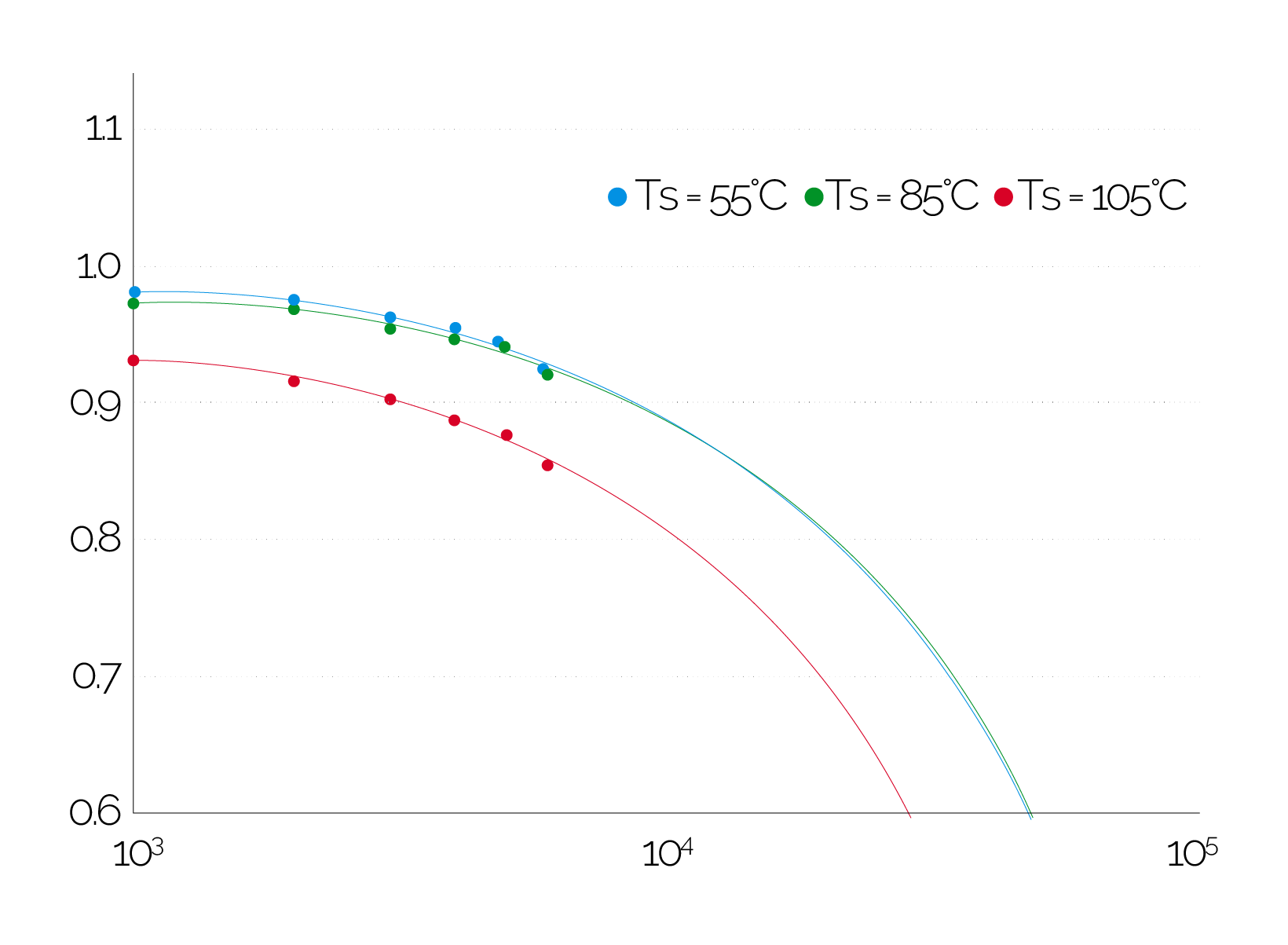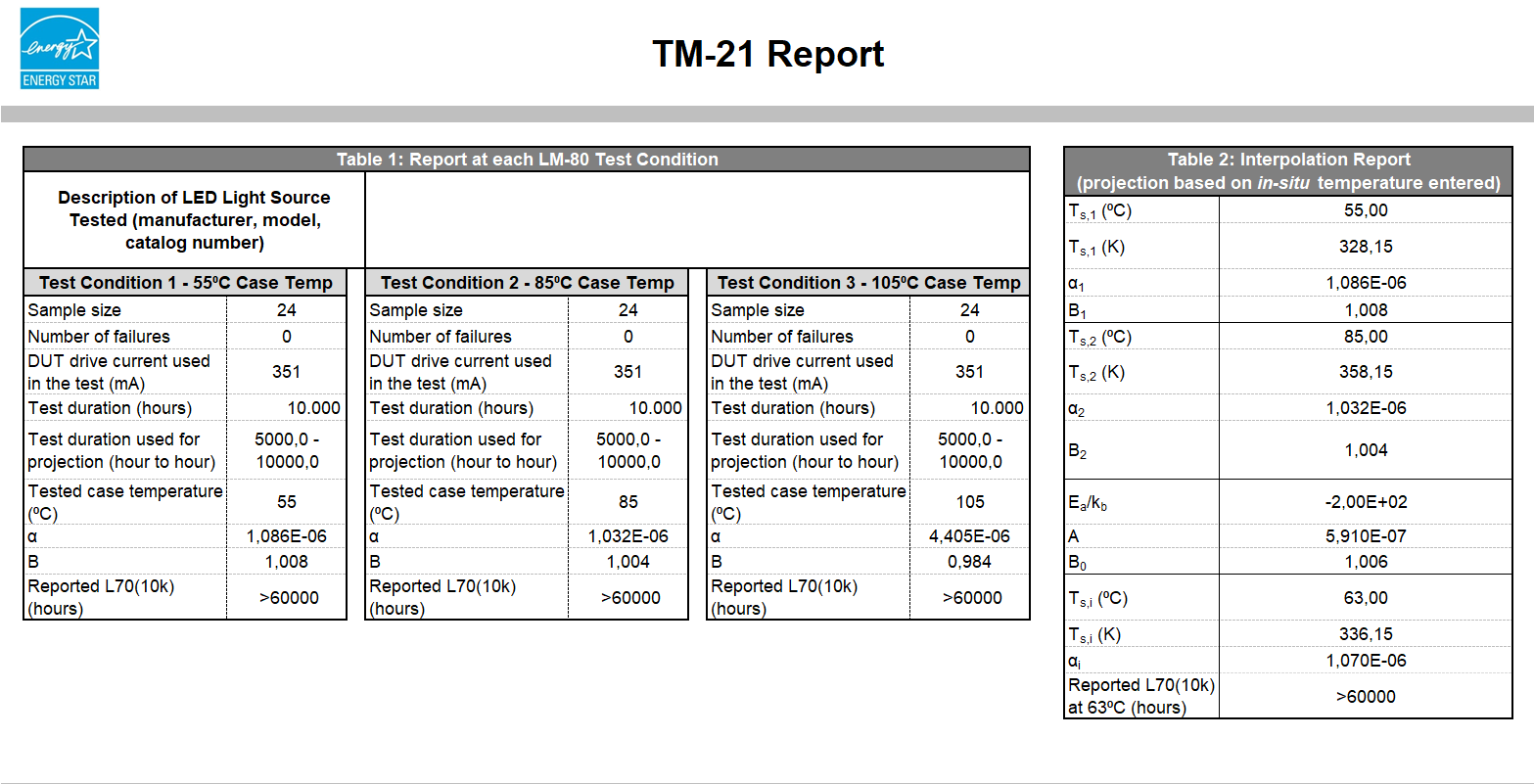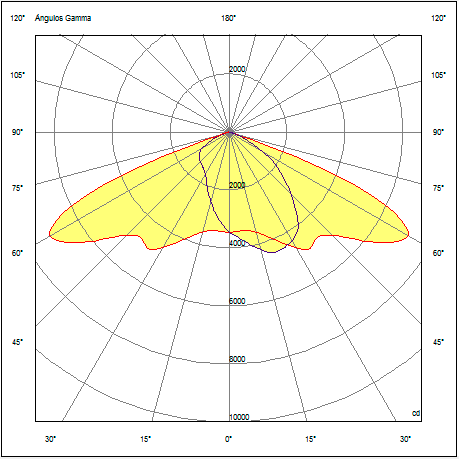
UNE-EN/IEC 62717 & UNE EN/IEC
62722 - Estimation of luminous
flux maintenance.





UNE-EN/IEC 62717 & UNE EN/IEC
62722 - Estimation of luminous
flux maintenance.




Tests according to IES LM-80, IES TM-21 and UNE-EN/IEC 62717 and UNE EN/IEC 62722 standards
Luminous flux maintenance estimation
Nowadays, there are few standardized procedures to predict the maintenance of the luminous flux or the useful life of an LED lighting system. One of them is the American standard IES TM-21, which allows predicting the useful life of a lighting system.
Testing according to IES TM-21 provides the methodology to determine when the “life” of an LED lighting system is reached. We understand useful life as the point at which the light emitted by a LED depreciates to a level where it is no longer considered suitable for a specific application. Normally 30% of luminous depreciation or the loss of 70% of luminous flux, known as L70, is considered as a limit.
To obtain the projection of the maintenance of the luminous flux of a system such as an LED luminaire according to TM-21, it is necessary to previously have the data of depreciation of the luminous flux of the LED chip by means of the LM80 test.
ANSI/IES LM-80 – LED Luminous Flux Depreciation Data
The ANSI / IES LM-80 test is a test procedure for LED chips, arrays and modules to quantify the depreciation of luminous flux and color variation as a function of time.
The tests are carried out at different temperatures (55ºC, 85ºC and a third temperature to be selected by the manufacturer) and the variables are obtained in steps of 500h-1,000h for a total time of between 3,000h and 10,000h, or even more. With this information it will be possible to extrapolate the maintenance of the luminous flux and the variation of the color of the LED systems that have these components incorporated.


IES/ANSI TM-21: Life span projection of LED lighting systems
The IES/ANSI TM-21 test is the Illuminating Engineering Society of North America (IESNA) approved method for using LM-80 data to perform luminous flux maintenance or lifespan projections of LED lighting systems.
For this procedure, the luminaire is monitored to obtain the operating temperatures of the LEDs and to be able to carry out the projection and extrapolation as reliably as possible.


The test provides the following information:
ISMT temperature test
LED temperature Ts (°C)
Power supply of each LED (mA)
L90,80,70 B50 projected
L90,80,70 B50 reported
L90,80,70 B10 projected
L90,80,70 B10 reported
Luminous flux depreciation graph
LM-80 used
UNE-EN 62717 and UNE EN/IEC 62722
In recent years, the significant increase in the use of LED luminaires together with the lack of universal standards available to measure or compare their performance have caused confusion when choosing which LED luminaire is the right one. This is due to the emergence of numerous unaccredited participants in the market. Some of them provide dubious data about the performance of their products.
The UNE-EN/IEC 62717 and UNE EN/IEC 62722 regulations have been created with the aim of curbing this phenomenon in the LED lighting industry. These standards help us to define a standardized procedure on how to present or demonstrate the performance of an LED system.
But, above all, that allows easy comparisons between products. This fact adds value to the professional market and allows accurate calculations and good results in the design of interior lighting and exterior lighting to be achieved.
The UNE EN/IEC 62722-2-1 standard “Performance requirements for LED luminaires” offers an overview of the most relevant features and product information, both “initial” and during the “useful life” , which should be used for planning lighting designs.
On the other hand, the UNE-EN 62717 standard “LED modules for general lighting” establishes the technical requirements for luminaires with LED technology for exterior and interior lighting.
Luminaire performance parameters:
Rated input power (W)
Nominal luminous intensity distribution (cd)
Ambient temperature related to luminaire performance (tq in ˚C)
Luminous flux (lm)
Correlated Color Temperature (CCT in K)
Average useful life (Lx in hours with x as the associated nominal luminous flux maintenance factor in %)
Luminous efficacy (η in lm / W)
Color rendering index (Ra)
Sudden failure or fatality value (in %)
How is the maintenance of the luminous flux or useful life specified?
The period of time until a percentage y of a set of LED modules in operation reaches a gradual degradation of the luminous flux of a percentage x is called “lifetime” and is generally expressed as LxBy.
The “B10” life is the time in which 10% of the LEDs have reduced their luminous flux below the specified L. The time when 50% of the LED modules are below the specified L (B50) is called the average lifetime.
It is illustrated below with an example:
LxBy = L70B10 is understood as the period of time during which 10% (B10) of a population of operational LEDs of the same type have failed or reduced their operation to maintain 70% of their initial luminous flux.


